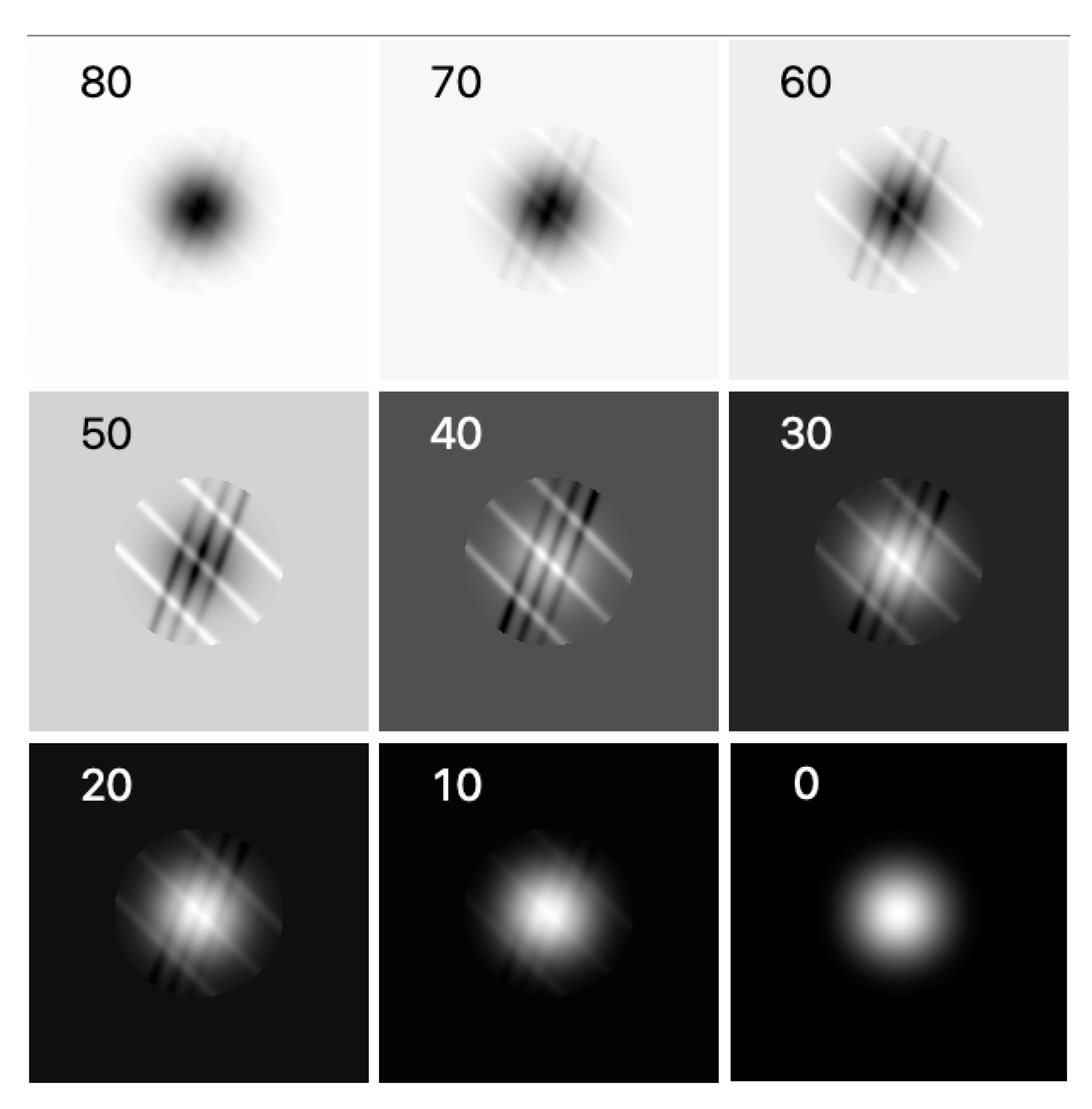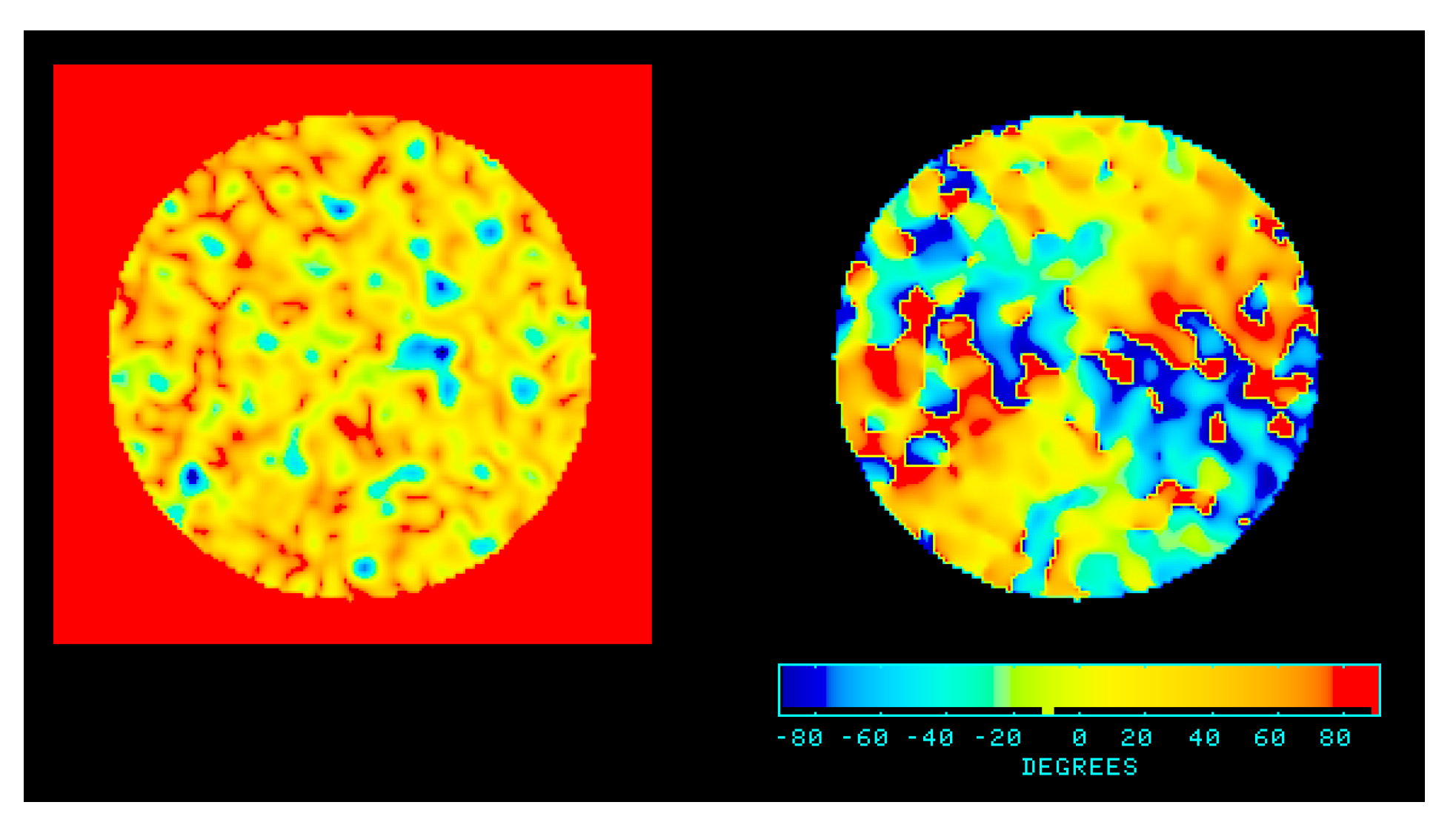Polarization Tomography with Stokes Parameters
Abstract
:1. Introduction
2. Method
2.1. An Illustrative Model: Multiple Polarized Components
2.2. An Illustrative Model—Polarization Angle Gradients
3. Cygnus A
4. Conclusions
Supplementary Materials
Author Contributions
Funding
Institutional Review Board Statement
Informed Consent Statement
Data Availability Statement
Conflicts of Interest
References
- Katz-Stone, D.; Rudnick, L. Spectral and Polarization Tomography. BAAS 1995, 27, 1425. [Google Scholar]
- Brentjens, M.; de Bruyn, A. Faraday rotation measure synthesis. Astron. Astrophys. 2005, 441, 1217. [Google Scholar] [CrossRef] [Green Version]
- Farnsworth, D.; Rudnick, L.; Brown, S. Integrated Polarization of Sources at λ ~ 1 m and New Rotation Measure Ambiguities. Astron. J. 2011, 141, 191. [Google Scholar] [CrossRef]
- O’Sullivan, S.P.; Brown, S.; Robishaw, T.; Schnitzeler, D.H.F.M.; McClure-Griffiths, N.M.; Feain, I.J.; Taylor, A.R.; Gaensler, B.M.; Landecker, T.L.; Harvey-Smith, L.; et al. Complex Faraday depth structure of active galactic nuclei as revealed by broad-band radio polarimetry. Astron. J. 2012, 421, 3300. [Google Scholar] [CrossRef]
- Sebokolodi, M.L.L.; Perley, R.; Eilek, J.; Carilli, C.; Smirnov, O.; Laing, R.; Greisen, E.W.; Wise, M. A Wideband Polarization Study of Cygnus A with the Jansky Very Large Array. I. The Observations and Data. Astrophys. J. 2020, 903, 36. [Google Scholar] [CrossRef]




Publisher’s Note: MDPI stays neutral with regard to jurisdictional claims in published maps and institutional affiliations. |
© 2021 by the authors. Licensee MDPI, Basel, Switzerland. This article is an open access article distributed under the terms and conditions of the Creative Commons Attribution (CC BY) license (https://creativecommons.org/licenses/by/4.0/).
Share and Cite
Rudnick, L.; Katz, D.; Sebokolodi, L. Polarization Tomography with Stokes Parameters. Galaxies 2021, 9, 92. https://doi.org/10.3390/galaxies9040092
Rudnick L, Katz D, Sebokolodi L. Polarization Tomography with Stokes Parameters. Galaxies. 2021; 9(4):92. https://doi.org/10.3390/galaxies9040092
Chicago/Turabian StyleRudnick, Lawrence, Debora Katz, and Lerato Sebokolodi. 2021. "Polarization Tomography with Stokes Parameters" Galaxies 9, no. 4: 92. https://doi.org/10.3390/galaxies9040092
APA StyleRudnick, L., Katz, D., & Sebokolodi, L. (2021). Polarization Tomography with Stokes Parameters. Galaxies, 9(4), 92. https://doi.org/10.3390/galaxies9040092






